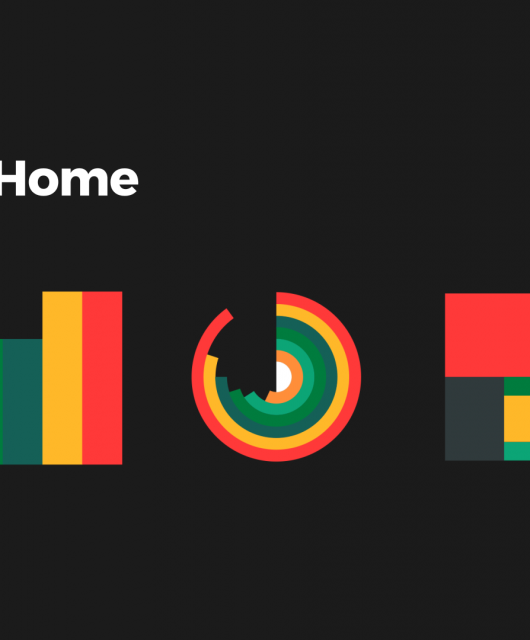Global Trends For A No-One-Knows-Where-This-Will-End-Up Future, By Masterbrand’s Almudena Clemente
- The no-trend trend
The main trend, ironically, is the diminishing impact of trends. Every day, we are bombarded with more and more reports, studies, brands and groups numbing us to the impact these external references or influences have on how we decide to live.

The post-pandemic world is one of hyper immediacy, personalization and niches within niches, micro-approaches and micro-cultures. In it, we do not have time to follow all the trends, and when we do get on the bandwagon, it turns out we are already too late, everyone has moved on to the next thing. The result of this over-trending is that what others say and do matters very little to us.
Our principles also guide us. We are moving away from sectors synonymous with “one use & throw away” toward more circular ones — using basics, quality and timeless elements, far from the hyper-consumption of each season. Brands such as Zeemans or Zara’s recent Origins both try to own this “no-trend” style.
And let’s not forget the power of the economy. Things are getting rough out there and every cent we can save counts. If that means buying more second-hand clothes from Vinted and less from latest season, then we do it.
On a European level, the global geopolitical situation has also forced manufacturers to reduce their product portfolios with no major launches or revolutionary innovations expected for the coming year. In the best of cases, they will maintain their basic portfolios.
All this is happening as the world is trotting towards deglobalization, with more local trends, less mass-market and more long-market.
- Bye bye unicorns
Winter is coming in many ways. We are entering a season of uncertainty and inflation where spending is tight, both in terms of B2C and B2B.
In the coming months, finding the right partners will be more important than ever. Enthusiasm and desire are critical, but without the right experience they may end up burning out. After a heavy expansion period, today there are countless start-ups that have multiplied exponentially. New small and brave business have popped up like mushrooms. But many times they are financed by third parties, enhancing their growth in an unreal (and to some extent misleading) way compared with the rest of the industry. Because it’s relatively easy to grow if you don’t have to be profitable, but that doesn’t last forever.
The collapse of the big tech companies, once sexy unicorns, only confirms this change in market behavior and investor mindsets. The idealized paradigm of Silicon Valley is truncated, layoffs are multiplying, and Mark Zuckerberg has seen his assets diminished by 70% in the last year. Today, the infinite growth model of the past is history, and technology companies are looking toward business models that will allow them to be truly sustainable, redefining an entire category where the unicorn, now synonymous with instability, has lost its cool and it’s indeed fancy but unreal.
Streaming series have helped revealed the often ugly insides of these high-growth companies such as Spotify and Uber (anyone else waiting for the Netflix series about Netflix?), with great initial ideals, but also with a lot of ego and excessive ambition contaminating the company’s own growth. This raises a big question: what if these businesses are not sustainable? Now that Netflix, Spotify, Amazon and Uber are part of our lives, what happens if in a few years they disappear? How will we listen to music, watch TV, shop and travel? Are we prepared to go back to living without them?
- Liquid companies
From operations, to marketing, branding and culture, liquid companies are capable of adapting, anticipating, and changing easily… based on a philosophy of digital work applied to everything.
In 2023, digital should no longer be a trend. Incredibly, according to the Think Digital Report, nearly half of companies today have problems investing in needed digitalization. And without digitalization there is no evolution. These sectors that still drag their feet to join the hybrid world, with a fluid experience between on and offline, and the companies that still do not have the mentality, resources and structure necessary to compete at breakneck speed, will find it difficult to grow in the long term.
To overcome this resistance to change, we first need the right culture with talent that fits our values and capabilities. Because culture is key to creating a liquid company. And from this employee-centric vision, we can optimize all our efforts and resources in an efficient way. In the end, lack of culture turns out to be the main barrier to the digitalization for companies. No matter what we invest in software or systems, if our team is not prepared, it will not help us much.
- Walking The Purpose
We have been hearing about the importance of a brand purpose for a long time. Many companies already have one, but the moment of truth is when you put it into action.
Despite all the debate, skepticism and criticism around purposes, we see more and more companies making their purposes tangible and down-to-earth with real initiatives that lead to a wide variety of benefits in terms of:
- Reputation, based on the coherence and commitment to do what is said
- Marketing and communications, by providing new approaches from which to establish conversations with audiences
- Branding, by building brand associations that go beyond daily commercial or transactional interactions
- Recruiting and loyalty, as an ongoing source of pride for employees
- ESG, where our purpose should be the common thread
- Green is the New Normal, be humble
Just like digitalization, sustainability (and responsibility) has already become a cross-sector must-have. Every company talks about it. But aside from Patagonia, Tesla and a few other brands, it is rare for a company to be able to turn sustainability into a relevant and efficient differentiation vector in terms of branding.
So, it’s time to choose. Either we articulate sustainability as the main competitive advantage of our business, our north star, or we take a more humble approach, treating it as something embedded in our business strategy (of course), but not as the differential prop. Because, we are already too late to the party to do that. Green is no longer a blue ocean, it is mainly red.
- Upside down, changing meanings
Not long ago, good weather meant sun. Now the sun can be insufferable. Being beautiful meant being thin, and success in life meant having an important position and a big car. Today, society is rethinking its values, and the world around us is changing so much… that social conventions and how we define ourselves is beginning to blur, reflecting a new and more conscious-led reality and our perception of our place in it.
This presents a huge opportunity for brands to make this new worldview their own, to connect with global insights that are beginning to flourish and that are the green shoots of a new future that no-one-knows-where-it-will-end-up.





